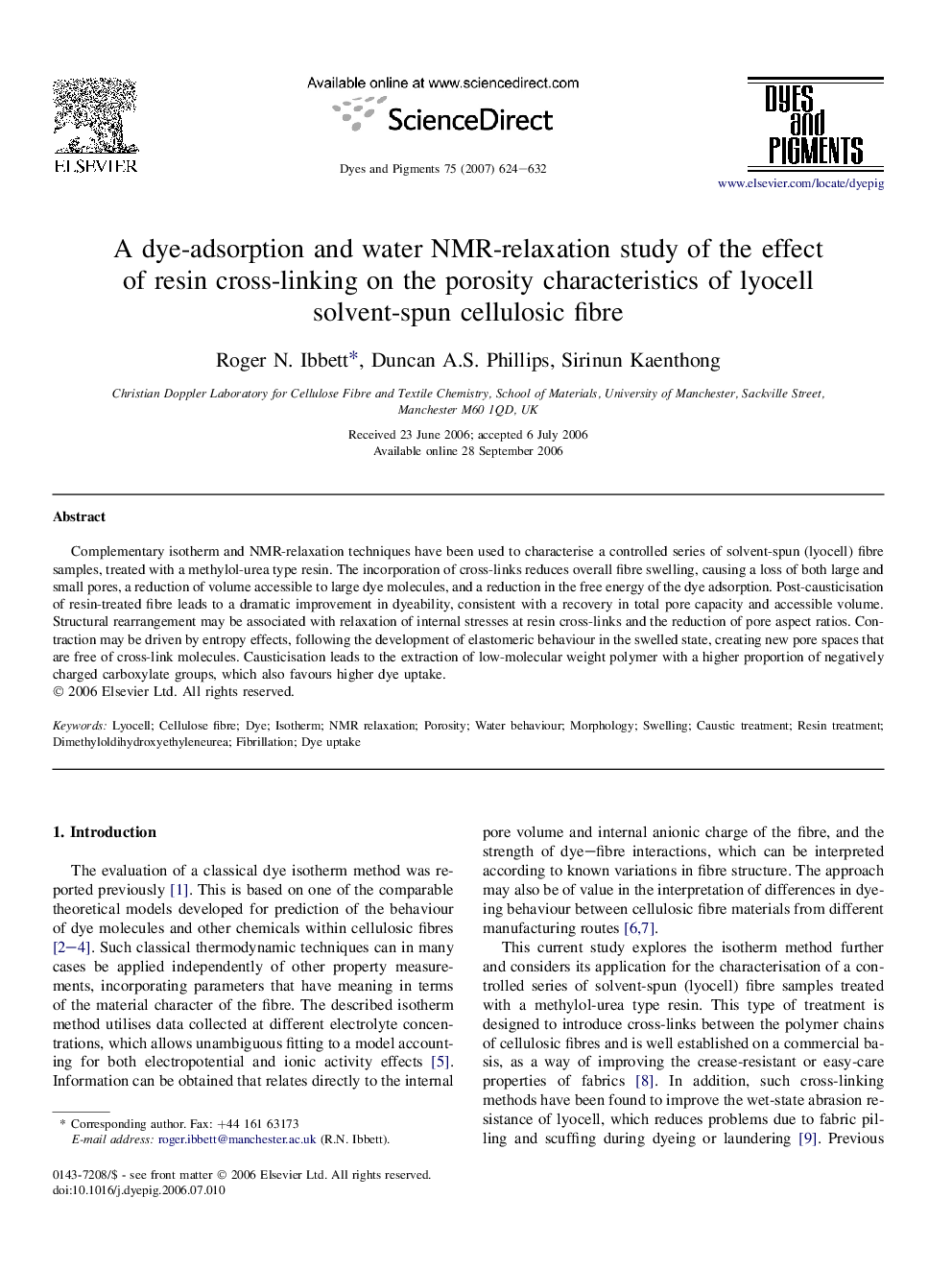| Article ID | Journal | Published Year | Pages | File Type |
|---|---|---|---|---|
| 177875 | Dyes and Pigments | 2007 | 9 Pages |
Complementary isotherm and NMR-relaxation techniques have been used to characterise a controlled series of solvent-spun (lyocell) fibre samples, treated with a methylol-urea type resin. The incorporation of cross-links reduces overall fibre swelling, causing a loss of both large and small pores, a reduction of volume accessible to large dye molecules, and a reduction in the free energy of the dye adsorption. Post-causticisation of resin-treated fibre leads to a dramatic improvement in dyeability, consistent with a recovery in total pore capacity and accessible volume. Structural rearrangement may be associated with relaxation of internal stresses at resin cross-links and the reduction of pore aspect ratios. Contraction may be driven by entropy effects, following the development of elastomeric behaviour in the swelled state, creating new pore spaces that are free of cross-link molecules. Causticisation leads to the extraction of low-molecular weight polymer with a higher proportion of negatively charged carboxylate groups, which also favours higher dye uptake.
